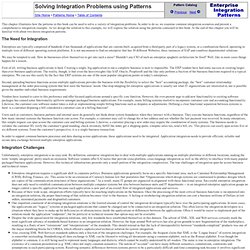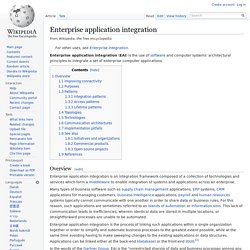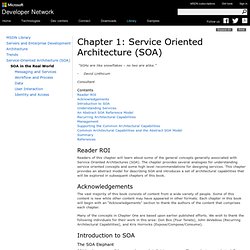

Enterprise architecture framework. An enterprise architecture framework (EA framework) defines how to create and use an enterprise architecture.

An architecture framework provides principles and practices for creating and using the architecture description of a system. It structures architects' thinking by dividing the architecture description into domains, layers or views, and offers models - typically matrices and diagrams - for documenting each view. Overview[edit] Enterprise architecture regards the enterprise as a large and complex system or system of systems.[2] To manage the scale and complexity of this system, an architectural framework provides tools and approaches that help architects abstract from the level of detail that builders work at to bring enterprise design tasks into focus and produce valuable architecture description documentation.
The components of an architecture framework provide structured guidance that is divided into three main areas:[3] History[edit] EA framework topics[edit] View model[edit] A Day in the life of an Enterprise Architect. Mike Walker July 2007 Summary: An enterprise architect’s role is multi-faceted and extremely dynamic.

Not only must they keep track of IT concerns, but also those of the business. Through the work performed on strategic initiative, EAs strive to make alignment between IT and the business more transparent. Contents IntroductionHow this Article is StructuredThe Role of an Enterprise ArchitectHow Enterprise Architects are DifferentTools Enterprise Architects UseHow They Make DecisionsChallenges they FaceDealing with GovernanceConclusionReferences Introduction Enterprise architecture has grown from being just a set of small pilots to being a fully sponsored and supported initiative within enterprises.
We will take these observations of the enterprise architect role and contrast them with more defined roles in IT, such as the role of the developer. The term “enterprise architecture” can have many different meanings, and we often find that there are only particular aspects examined. Figure 1. Enterprise Integration Patterns - Solving Integration Problems using Patterns. This chapter illustrates how the patterns in this book can be used to solve a variety of integration problems.

In order to do so, we examine common integration scenarios and present a comprehensive integration example. As we design the solution to this example, we will express the solution using the patterns contained in this book. At the end of this chapter you will be familiar with about two dozen integration patterns. The Need for Integration Enterprises are typically comprised of hundreds if not thousands of applications that are custom-built, acquired from a third-party, part of a legacy system, or a combination thereof, operating in multiple tiers of different operating system platforms.
We may be tempted to ask: How do businesses allow themselves to get into such a mess? First of all, writing business applications is hard. Vendors have learned to cater to this preference and offer focused applications around a specific core function. Integration Challenges Information Portal. Enterprise application integration.
Enterprise application integration (EAI) is the use of software and computer systems' architectural principles to integrate a set of enterprise computer applications.

Overview[edit] Many types of business software such as supply chain management applications, ERP systems, CRM applications for managing customers, business intelligence applications, payroll and human resources systems typically cannot communicate with one another in order to share data or business rules. For this reason, such applications are sometimes referred to as islands of automation or information silos. This lack of communication leads to inefficiencies, wherein identical data are stored in multiple locations, or straightforward processes are unable to be automated. In the words of the Gartner Group, EAI is the "unrestricted sharing of data and business processes among any connected application or data sources in the enterprise Improving connectivity[edit] points, is given by .
OCM Java EE 6 Enterprise Architect Exam Guide (Exams 1Z0-807, 1Z0-865 & 1Z0-866) (Oracle Press): Paul Allen, Joseph Bambara: 9780071826785: Amazon.com: Books. Mashups: Concepts, Models and Architectures (Data-Centric Systems and Applications): Florian Daniel, Maristella Matera: 9783642550485: Amazon.com: Books. Chapter 1: Service Oriented Architecture (SOA) “SOAs are like snowflakes – no two are alike.” - David Linthicum Consultant Contents Reader ROIAcknowledgementsIntroduction to SOAUnderstanding ServicesAn Abstract SOA Reference ModelRecurring Architectural CapabilitiesManagementSupporting the Common Architectural CapabilitiesCommon Architectural Capabilities and the Abstract SOA ModelSummaryReferences Reader ROI Readers of this chapter will learn about some of the general concepts generally associated with Service Oriented Architectures (SOA).

Acknowledgements The vast majority of this book consists of content from a wide variety of people. Many of the concepts in Chapter One are based upon earlier published efforts. Introduction to SOA The SOA Elephant SOA has become a well-known and somewhat divisive acronym. Figure 1. The blind men then engage in a series of debates about what they believe are facing them: “…And so these men of Indostan Disputed loud and long, Each in his own opinion Exceeding stiff and strong, And all were in the wrong!” Service-Oriented Architecture (SOA)